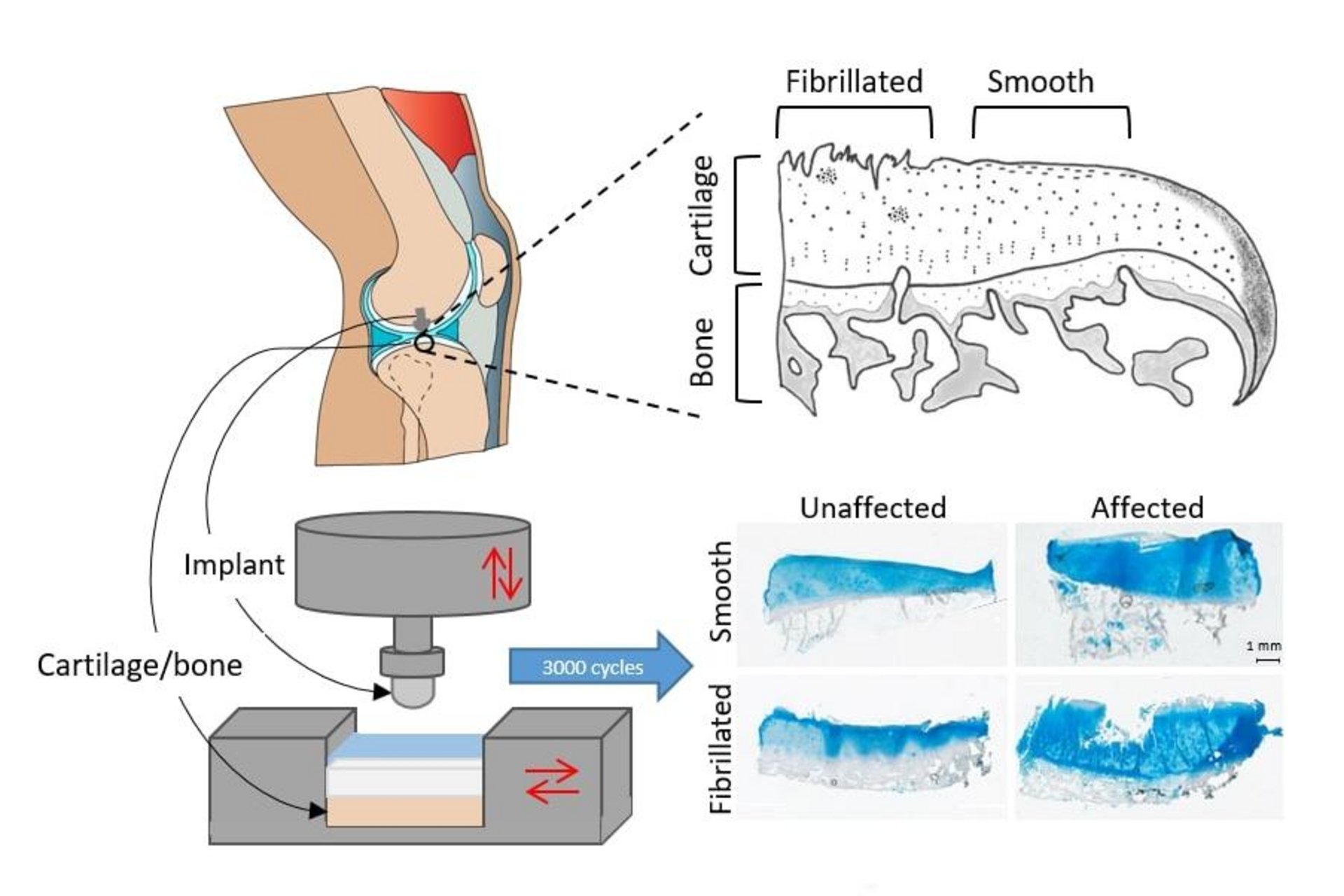
Resurfacing osteochondral implants are a promising interim or alternative treatment for patients around 40 to 50 years old, who are no longer suitable for regenerative techniques, but who are too young for total knee replacement. Metal implants placed in large animal models resulted in wear of the cartilage opposite to the implant, possibly due to their high stiffness. Therefore the applicability of a medical grade polyurethane implant with mechanical properties more similar to native cartilage is currently being investigated. The primary goal of the research presented here was to investigate the friction and wear behavior of articular cartilage relative to this implant and to compare this against natural cartilage and clinically available metal implants.
Firstly, the effects of polymer type, gamma sterilization and hydration on the coefficient of friction (COF) of ruby-on-polymer was determined. No significant differences were found between the surface roughness of the polymer groups or between COF of the different treated and non-treated polymer groups. However, a significant difference was found between the different polymer types. Therefore, it can be concluded that gamma-sterilized, non-hydrated polymer I is most suitable as implant material for articulation against cartilage.
Secondly, the quality of the cartilage opposite to a cartilage defect was investigated using 1.5 or 3 Tesla magnetic resonance images. The quality of the opposing cartilage can be used as potential selection criteria for the surgery or the type of implant to use. The used database contained datasets of patients with defects which might typically be treated with an osteochondral implant according to an orthopaedic surgeon. It was shown that there is a wide range of MOAKS grades, from intact to severely degenerate, which can be found in the opposing cartilage. The results validate the research of the next part into how the degenerative cartilage grades respond to sliding indentation with various implant materials.
The last chapter explores cartilage wear following cyclic sliding compression with implants of varying materials against healthy porcine cartilage and human cartilage of various degenerative states. The osteochondral strips were evaluated macroscopically and microscopically. Furthermore these strips were graded using the Mankin scoring system. Results showed that the polymer implant induces scratches in the opposing grade 1 human cartilage which are visible after an India ink staining. The reciprocal sliding motion of a metal implant against grade 1 human cartilage resulted in an indentation of the cartilage. Both the polymer and metal implant induced cracks and loss of tissue in the grade 3 human cartilage plateaus. The Mankin score showed no significant differences. Because the sample size was limited to three, it is recommended to evaluate reproducibility of these results in a follow-up study. Furthermore, tests with longer duration are advised to determine whether the scratches induced by the polymer implant or the indentation induced by the metal implant are detrimental to the cartilage in the long term.